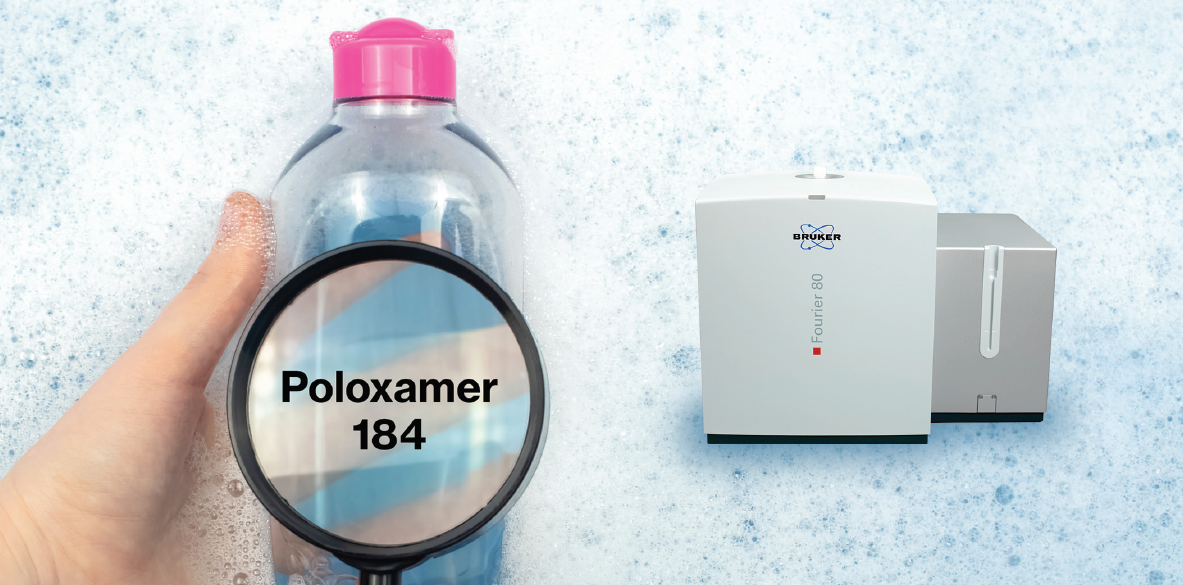

Quantification of Oxyethylene in Poloxamers in Full Automation on the Fourier 80
Poloxamers are synthetic block polymers composed of a central hydrophobic oxypropylene chain connecting two hydrophilic oxyethylene ends. Multiple poloxamers differing in the amount of repeating units are commercially available under the trade names Kolliphor®, Pluronic® and Synperonic®. They are identified by a characteristic Poloxamer number xyz, where the digits xy multiplied by a factor of 100 corresponds to the approximate molecular mass of the oxypropylene center and z multiplied by 10 describes the oxyethytene content. A variety of valuable applications in fields of drug delivery and cosmetics have been found, taking advantage of their amphiphilic and surfactant properties. The quantification of the oxyethylene content is of great interest. A poloxamer's ability to self-assemble and form a thermos-gel for instance is highly related to its composition.
To quantify the oxyethylene weight percentage in poloxamers the United States Pharmacopeia - National Formulary (USP-NF) suggests Nuclear Magnetic Resonance Spectroscopy [1]. 1H 1D NMR spectra of poloxamers show two peak regions; one region at approximately 3.7 ppm corresponding to the -CH2 and -CH groups and one at around 1.1 ppm resulting from the oxypropylene methyl groups. The integral ratio of these two regions can be used to directly determine the oxyethylene to oxypropylene ratio. This quantification procedure described by the USP-NF can be performed in an entirely automated fashion on the Fourier 80, Bruker's FT-NMR benchtop spectrometer.
[1] United States Pharmacopeia (2022). NF Monographs, Poloxamer. USP-NF. Rockville, MD: United States Pharmacopeia. DOI: https://doi.org/10.31003/USPNF_M66210_05_01
Downloads
- To learn more about this compendial testing with benchtop NMR, download our application note "Quantification of Oxyethylene in Poloxamers in Full Automation on the Fourier 80"
- To understand how to implement this procedure in full compliance with USP and Ph. Eur. regulations, download our comprehensive whitepaper "GMP compliant poloxamer testing by NMR using Benchtop spectrometer"